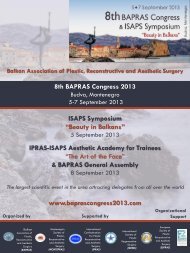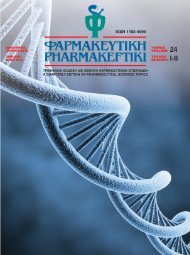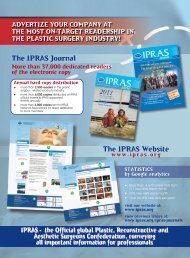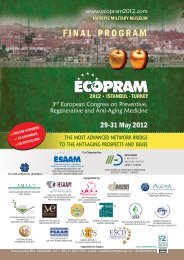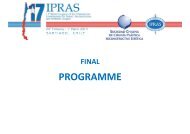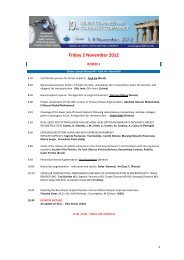Pharmaceutical Industry and Green Chemistry
Pharmaceutical Industry and Green Chemistry
Pharmaceutical Industry and Green Chemistry
You also want an ePaper? Increase the reach of your titles
YUMPU automatically turns print PDFs into web optimized ePapers that Google loves.
The pharmaceutical industry for years was<br />
embracing more <strong>and</strong> more “green” processes <strong>and</strong><br />
technology operations. The research departments of<br />
many big drug manufacturers in the developed countries<br />
made many advances for new methodologies, better<br />
biocatalysis reactions, less solvents <strong>and</strong> cuts in waste<br />
production. Researchers noticed that it took several<br />
years for pharmaceutical companies to translate green<br />
principles into measurable goals for environmental<br />
sound research, development <strong>and</strong> production.<br />
Among industrial enterprises drug manufacturers<br />
introduced rigorous safety <strong>and</strong> health regulations to<br />
protect their workers <strong>and</strong> environmental criteria for<br />
their products. Safety, Efficiency, Reliability <strong>and</strong><br />
Economy are the four pillars of change <strong>and</strong> their<br />
promotion is considered as a competitive advantage,<br />
better environmental credentials <strong>and</strong> economical<br />
benefits. 6,7<br />
States of America (USA) accounts for almost half of<br />
the global pharmaceutical market, with $289 billion in<br />
annual sales followed by the EU <strong>and</strong> Japan. Emerging<br />
markets such as China, Russia, South Korea <strong>and</strong><br />
Mexico outpaced that market, growing at a huge 81%.<br />
All pharmaceutical industries showed a positive profit<br />
growth (4-6%). In 2010 the global pharmaceutical<br />
market was worth $825 billions. In the annual Fortune<br />
500 survey, the pharmaceutical industry topped the list<br />
of the most profitable industries, with a return of 17%<br />
on revenue. It is well known that the pharmaceutical<br />
industry invests heavily on research for new drugs. In<br />
2009, it contributed for research, development <strong>and</strong><br />
investment $66.3 billions. 8,9<br />
Global Trends for the <strong>Pharmaceutical</strong><br />
<strong>Industry</strong> in the Last Decade<br />
The global spending on prescription drugs has<br />
increased substantially the last decade. In 2006, global<br />
spending on prescription drugs topped $643 billion,<br />
even as growth slowed down in Europe <strong>and</strong> North<br />
America. Statistical data showed that the United<br />
Figure 1. Drug manufacturing is the most profitable<br />
chemical industry<br />
TABLE 1. MAJOR PHARMACEUTICAL COMPANIES (ANNUAL FOR 2004).<br />
Company<br />
HQ location<br />
Revenue of<br />
pharmaceutical<br />
segment,<br />
mln USD ($)<br />
Total sales, mln<br />
USD ($)<br />
Share of<br />
pharmaceutical<br />
segment, %<br />
Pfizer NY, U.S. 46,133 52,516 87.85%<br />
GlaxoSmithKline UK 31,434 37,324 84.22%<br />
Johnson & Johnson NJ, U.S. 22,190 47,348 46.87%<br />
Merck NJ, U.S. 21,494 22,939 93.70%<br />
AstraZeneca UK 21,426 21,426 100.00%<br />
Novartis Switzerl<strong>and</strong> 18,497 28,247 65.48%<br />
Sanofi-Aventis France 17,861 18,711 95.46%<br />
Roche Switzerl<strong>and</strong> 17,460 25,168 69.37%<br />
Bristol-Myers Squibb NY, U.S. 15,482 19,380 79.89%<br />
Wyeth NJ, U.S. 13,964 17,358 80.45%<br />
Abbott IL, U.S. 13,600 19,680 69.11%<br />
Eli Lilly IN, U.S. 13,059 13,858 94.23%<br />
Takeda Japan 8,648 10,046 86.09%<br />
Schering-Plough NJ, U.S. 6,417 8,272 77.57%<br />
Bayer Germany 5,458 37,013 14.75%<br />
45



